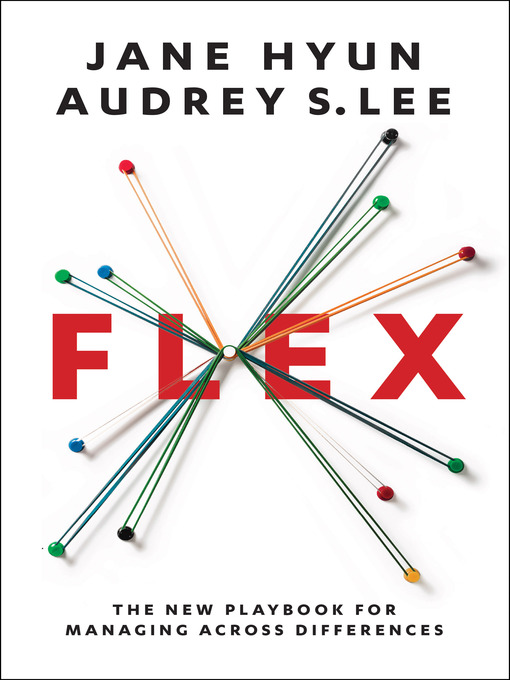
Flex
The New Playbook for Managing Across Differences
کتاب های مرتبط
- اطلاعات
- نقد و بررسی
- دیدگاه کاربران
نقد و بررسی

January 13, 2014
Executive coaches Hyun (Breaking the Bamboo Ceiling) and Lee offer a solid, common-sense guide to creating a successful and diverse workplace in terms of culture, age, and gender. Both authors were raised with strong Confucian values—hard work, humility, and an aversion to boasting about accomplishments. That kind of reticence won’t take one very far in a Western workplace, the authors argue. How to make sure differences in communications styles are acknowledged so that employees’ careers don’t get unfairly damaged? The answer lies in “flexing”: adapting work behavior and communication in a way that respects status and cultural differences. The authors cover differing management styles, “flexing” across different communication styles, finding common ground in workplaces that employee workers from different generations, becoming a difference-fluent leader, building trust, and serving as a mentor, sponsor, or coach, among other topics. Their guide is clear and illustrative, though the topic could have been addressed more succinctly. Agent: Stephanie Rostan, Levine Greenberg Literary Agency.

February 15, 2014
With the assistance of Miller, executive coaches Hyun (Breaking the Bamboo Ceiling: Career Strategies for Asians, 2005) and Lee examine how "infusing cultural proficiency initiatives into company-wide values, policies and programs achieves a demonstrable effect." The authors report that the workforce is changing, growing more multicultural, younger and more female. These changes call for a much more nuanced response from corporate leaders to avoid pitfalls and achieve success. Hyun and Lee emphasize the importance of two requirements. The first, which they term "fluency," is the ability to work across cultures; it is comparable to speaking multiple foreign languages. The second, "flex," includes the skills required to work across "the power gap"--the distance that separates leaders from others in an organizational structure. However, the authors stress that sentiments like "let us respect each other" are insufficient. People in leadership positions need to face the problem of understanding how subtle cultural differences between people of different gender, ethnic and generational backgrounds can be critical for effective leadership--e.g., between more outgoing cultures, like Americans, and more reserved ones, like Asians. Problems also may arise from a failure to recognize more subtle differences between different age groups--baby boomers, Generation Xers and Yers and millenials--regarding how they communicate, as well as their goals and approaches to the dynamics of the workplace. The authors seek to show readers how to reduce losses of time and resources incurred when the potential contributions of well-qualified recruits or hires are lost because management doesn't fully understand how to bring them on board. They discuss many ways of overcoming the business consequences of such failures to flex across the gap. "[O]ur experience has taught us that interpersonal dynamics can change when people with a drive for making a difference take the initiative and then influence others to multiply the effect," they write. Hyun and Lee offer convincing evidence to illustrate how to enhance communication skills across various workplace divides.
COPYRIGHT(2014) Kirkus Reviews, ALL RIGHTS RESERVED.

February 15, 2014
Coauthors Hyun (Breaking the Bamboo Ceiling) and Lee (principal, Hyun & Associates) provide the modern manager with a playbook on how to switch among leadership styles to get the most out of employees. Based on the premise that today's workplace suffers from a "power gap" between the frontline manager and employees who are increasingly multicultural, intergenerational, and female, the authors' notion of "flexing" introduces the idea of a fluent leader who can bridge differences. Using examples from across disciplines, Hyun and Lee offer ways to encourage participation and innovation from employees who do not always work within the Western model of corporate culture. The book's three parts provide the rationale for their leadership model, practical methods for bridging personal and cultural divides, and ways to build fluency and flexibility within an organization. The premise behind the work is timely and important, but readers may find some of the examples filled with stereotypes rather than realistic people. VERDICT Hyun and Lee offer important methods for switching among proven leadership styles; their work will find an audience with Americans who need to manage a diverse workforce. For readers of business/management titles.--John Rodzvilla, Emerson Coll., Boston
Copyright 2014 Library Journal, LLC Used with permission.

























دیدگاه کاربران